Table of contents
- Low Energy Systems
- Alternate Energy Systems using Solar Energy or Waste Heat coupled with Thermal Storage
- Thermal energy storage TES
- Passive Building Technologies
- Natural Cooling and Ventilation
- Adaptive Comfort
- HVAC Industry applied Technologies
- Lowering Energy use in Refrigeration & the Cold Chain
- Conclusion
As we continue to rapidly expand the footprint of the built environment in Urban and semi urban landscapes, the energy to drive mechanical systems increases exponentially.
India avowed at the UN Climate Change Conference – COP 26, at Glasgow to become Carbon Neutral in less than 50 years and raise renewable energy from 130 GW to 500 GW in 10 years. The Built Environment MUST drastically reduce consumption of Building Energy per unit area by adopting multiple strategies to get these goals achieved.
Decarbonising Buildings must address several contributions including, but not restricted to lighting, vertical transportation, pumping, water and space heating, security systems and plug loads. This article is restricted to strategies to reduce Carbon emissions caused by Cooling Buildings and the Cold Chain
The Indian Ministry of Environment’s India Cooling Action Plan, ICAP, released in March 2019 carefully charts the many paths to achieve set National goals as projected Cooling Energy demand is set to grow 6 fold.


Decarbonising the built environment is achieved primarily by eliminating the direct and onsite use of fossil fuel (for example fossil fuel used to heat water in boilers), by reduction in the multiple facets of the use of building energy – that is usually generated by fossil fuel – as well as reducing Global Warming caused by the release of high GWP Refrigerants.
Thermal stress affects a majority of India’s population. Even if conventional methods of providing cooling are applied the challenge lies in intermittent availability and rising cost of electricity, and the growing cost in meeting energy and environment regulations.
With an emerging economy and about 18% of the Global population, India has the double challenge of providing comfort to over 800 million of its thermally stressed citizens, while managing rapidly growing energy demand and the pledge to de carbonise and thus reduce Global Warming.
Simultaneously the pandemic and worsening urban air quality has made life unsafe inside built environments that are not engineered to protect their occupants. This brings up a third challenge – and that is to create safe and healthy environments that have a low energy demand.
Apart from high efficiency conventional air conditioning systems, a number of other available and emerging strategies and technologies shall need application across a wide spectrum of Cooling needs to accelerate the process of Decarbonising of the Built Environment.
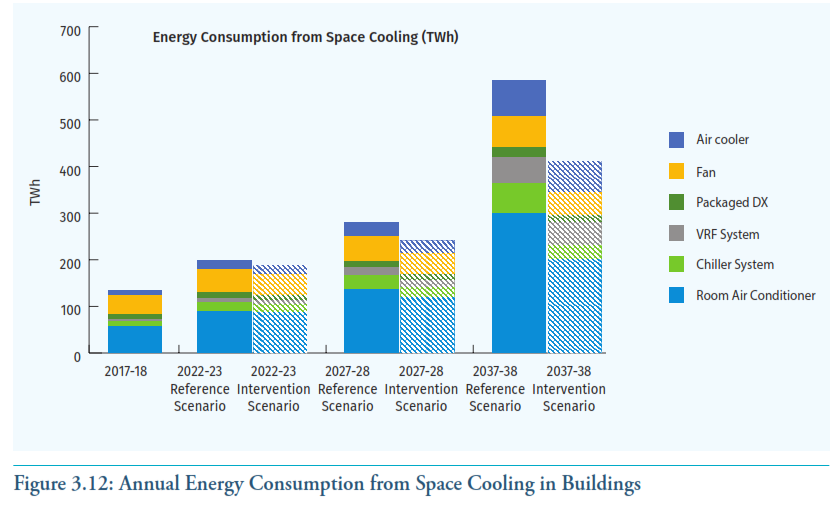
Low Energy Systems
Cooling by convection – use of Ceiling and Table Fans
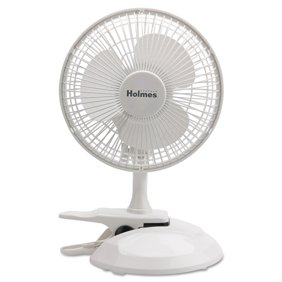
Over 60% of Indians stay cool with a Fan in Summer . They offer good comfort inside shaded spaces and their use must be encouraged instead of Air conditionng when temperatures are below 33 Degrees and humidity is below 70%. By a national mandated regulation to switch to Brushless DC Motors the energy consumption of air circulating Fans can be reduced by 65%.
Evaporative Coolers

Large parts of India’s hinterland have a composite climate of hot and dry summers and cool winters. Evaporative cooling offers a low energy cooling solution and simultaneous ventilation for most home and commercial applications in the hot dry summers. Well engineered evaporative coolers have controls that control temperature and humidity within a permissible range of comfort. Two stage evaporative coolers can further reduce temperatures below the prevailing wet bulb for further comfort and smaller air flows.
Radiant Cooling
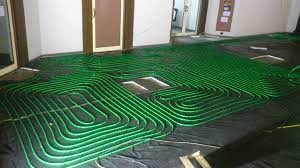
Cooling by Radiation is the most efficient way an occupant can feel comfortable by rapidly losing body heat to large, cooled surfaces of a room like the walls, floor and ceiling – that are cooled with chilled water circulated in pipes. The rate of cooling by radiation is proportional to the product of the cool surface area and 4th power of its temperature difference with the mean radiant temperature or in the case of an occupant – body surface temperature.
Structure Cooling
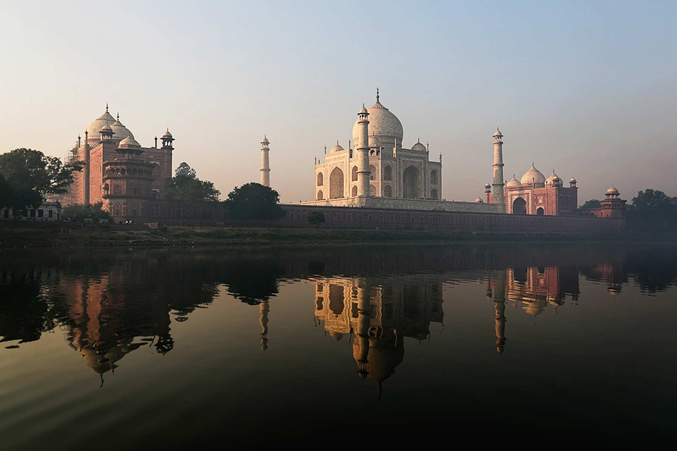
Transferring daily daytime summer heat to the river, the large base of the Taj Mahal gradually gets cooled by the same river through the long cold winter nights – keeping the Monument cool, throughout the summer. Similarly modern building structures can be cooled by embedded water pipes transferring daytime extracted heat to the cool night sky by radiation and by high emissivity building envelope surfaces.
Alternate Energy Systems using Solar Energy or Waste Heat coupled with Thermal Storage
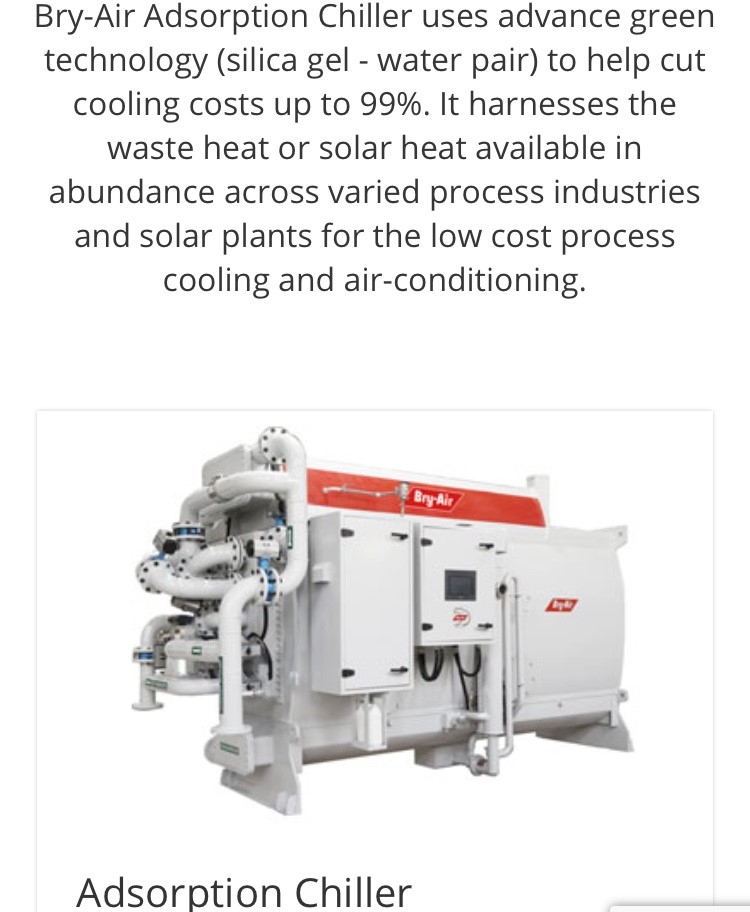
Cooling by Adsorption Chillers
Warm Water In 36 Deg C; Cool Water Out 7 Deg C Solar Thermal systems or available industrial waste heat can create Warm Water at 36 Deg C
An adsorption Chiller has an evaporator, two Adsorption Chambers, and a Condenser. Warm vapour condenses to a liquid without using any moving parts. The silica gel desiccant lowers the humidity inside the evaporator, which allows the water refrigerant to evaporate at a low temperature.
Thermal energy storage TES
TES is a technology that stocks thermal energy by heating or cooling a storage medium so that the stored energy can be used at a later time for heating and cooling applications. TES systems are particularly used particularly in buildings, in the cold chain and in industrial processes.
Sensible heat storage technologies, include water tank, underground, and packed-bed storage methods. Phase Change Materials for Thermal storage are based Categories of Melting point – and these Materials are chosen based on application.

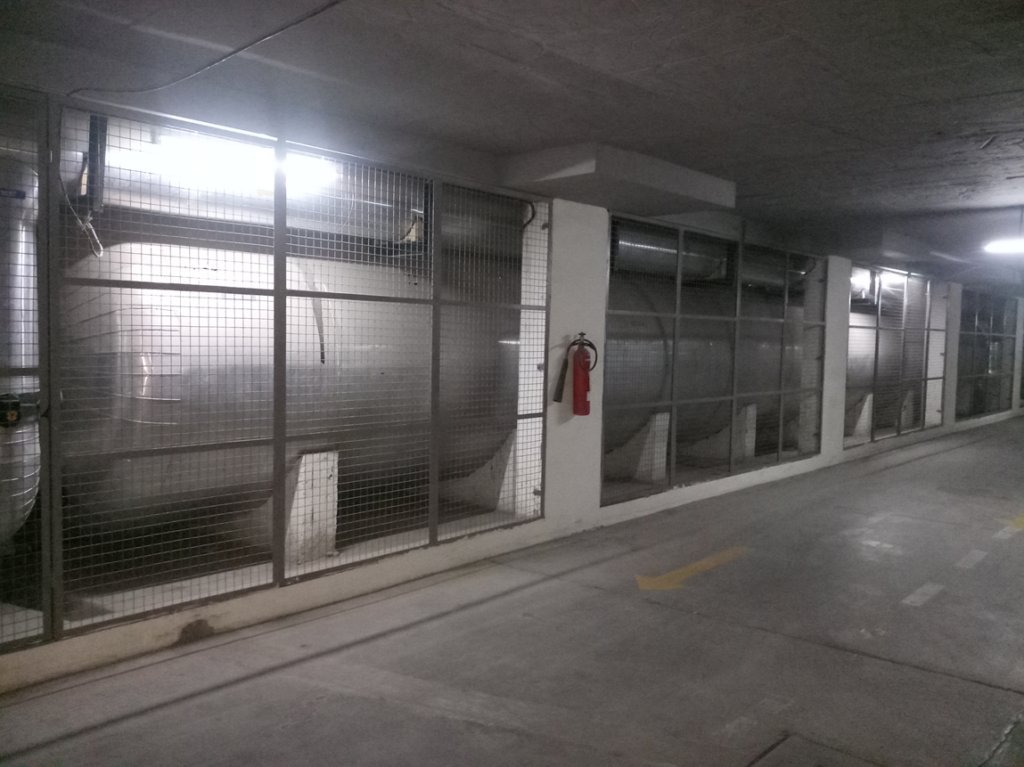
Using Eutectic salt globules inside an insulated tank, water can be cooled to very low temperatures at nights when cooling load are very low or absent – and the stored energy in thermally insulated tanks with eutectic – can be used during daytime high energy peak load periods
Combined with high efficency Chillers, such thermal storage systems can be well combined with district Cooling applications too – where the diversity of cooling load (due to the patterns of building use) allows the shaving of the calculated total peak Cooling Load.
District Energy Systems
District Cooling Energy Systems save over 50% of conventional Building Cooling Energy Loads . A detailed presentation of their engineered system components is not covered in this article .Cooling Energy as a Utility Service ( like Electricity and Water Supply ) can reduce commercial and residential cooling loads significantly as well as monitor and regulate over cooling of buildings.
Passive Building Technologies
Build to take advantage of the local Climate
Local Climates can determine many passive building design strategies that use high thermal mass, natural and installed insulation construction materials, windows on shaded facades, the use of awnings , surrounding trees , cool roofs , high emissivity reflecting surfaces , natural wind ventilation and evaporating water bodies and fountains surrounding the building.
Designing buildings for low greenhouse gas emissions
GHG emissions from buildings are produced by the use of energy from fossil fuels for their operation, and by embodied energy from fossil fuels in the materials, components and processes used for their transportation and construction.
The potential for a building to have a low energy use is largely determined by the design, materials and components used and the quality of construction. However, actual energy performance can be very strongly influenced by external weather conditions and operation protocols that include a building management system.
In addition to reducing the energy needs of individual buildings or groups of buildings through energy efficiency measures, the fossil energy consumption of the building sector can be reduced by integrating solar electricity generators (photovoltaics) into the structure of buildings or by mounting photovoltaic generators beside them (such as over parking shelters and garages) to supply some of the buildings’ own energy needs and to export any excess renewable energy to the grid.
Thermally self-adaptive glass
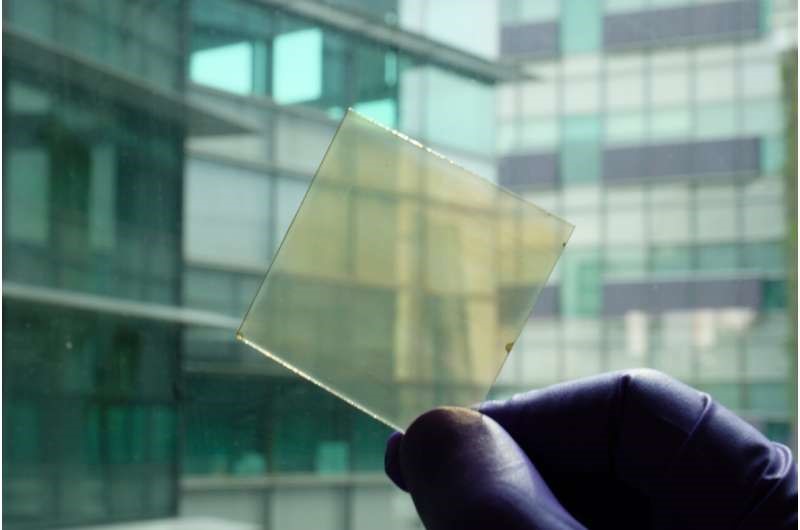
An international research team in Singapore recently developed a material that—when coated on a glass window panel — can effectively self-adapt to heat or cool rooms across different climates.
The self-adaptive glass is developed using layers of vanadium dioxide nanoparticles composites and low-emissivity coating to form a unique structure which could modulate heating and cooling simultaneously.
The newly developed glass, which has no electrical components, works by exploiting the spectrums of light responsible for heating and cooling. During summer, the glass suppresses solar heating (near infrared light) while boosting radiative cooling (long-wave infrared) — a natural phenomenon where heat emits through surfaces towards the cold universe — to cool the room. In the winter, it does the opposite to warm the room.
Natural Cooling and Ventilation
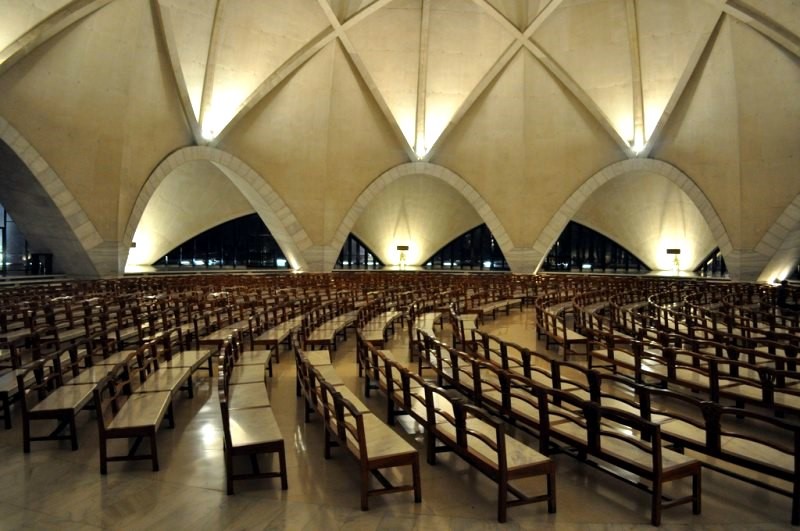
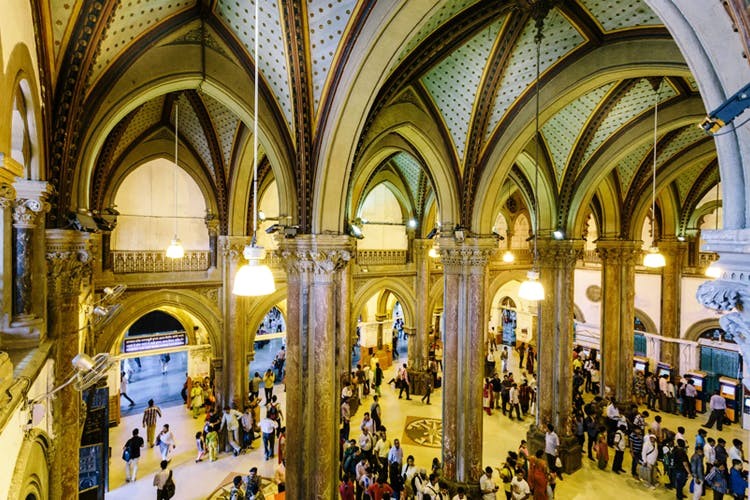
Heritage designs are replicated – The Bahai Temple at Delhi is a modern construction , while the Train Terminus at Mumbai was built in the 19th Century – both naturally offer respite from summer heat.
Adaptive Comfort
Humans have an inherent ability to adapt to climate, that has eroded with the comfort available from decades of mechanical cooling and heating – whose energy guzzling has brought us to the present state high global warming.
The use of appropriate clothing, setting indoor cooling temperature set points to between 24 to 30 Deg C (based on humidities ranging from 40% to 70%) and the use of circulating fans can obviate the need to turn on active mechanical air conditioning only when outdoor temperature rises above 35 Deg C in dry climates, or 33 Deg C in humid climates.
Active air conditioning is not the only means to provide adequate thermal comfort. As intelligent species we must develop and apply conscious and responsible behaviour to drastically reduce the use of building energy to prevent destructive Climate Changes.
HVAC Industry applied Technologies
Increasing adoption of inverter ACs
Inverter-type ACs reduce energy consumption by about 30% and are not as expensive to install compared to central air conditioning units, for which their adoption is increasing. They are incorporated with a variable speed compressor that switches off upon attaining the desired temperature and switches on when the temperature changes. In comparison to window air conditioners, they are cheaper to run by 30%-50% and occupy less space.
The fastest growing equipment segment is inverter-based air conditioners, which are growing at 40% per annum. This segment currently comprises 12% of the total market. Almost all the industry players have introduced models in this segment.
The Global Cooling Prize awarded recently will bring Air conditioners to market with just 700 W energy consumed by a 1.5 TR room air conditioner with 20% of the GWP of existing models.
Smart thermostats and emerging IOT
Smart thermostats have witnessed increased popularity in both residential and commercial markets. These thermostats allow the monitoring of temperatures at home and in commercial spaces from mobile devices and PCs. The thermostats monitor humidity and temperature and alter cooling cycles, resulting in energy- and money-saving opportunities. These thermostats are further advancing in terms of technology and IOT will enable district supervised monitoring of energy consumption.
Integrated systems
HVAC controls and building systems have become more integrated, driving demand among end-users who seek the benefits of streamlined systems such as lighting and access controls. This allows higher energy efficiency in managing building systems as it allows control from one interface. These systems facilitate the elimination of redundancy in systems and provide better occupant comfort, owing to better management. For instance, access controls integrated with HVAC controls allows the use of a single platform to monitor cooling and alter the cooling based on the number of people in the air-conditioned environment. These systems have already gained popularity in commercial offices, and they are also gaining popularity in hotels, healthcare facilities, schools, and commercial spaces.
Lowering Energy use in Refrigeration & the Cold Chain
60% of our working population are Agricultural Producers. The transformation to a beneficial Cold Chain shall have impactful Social Transformation. Refrigeration and the Cold Chain preserves agriculture, enhances Health care and contributes to the National GDP and well being of Humanity.
Segment-wise distribution of the end use of cold storages are depicted in the pie chart below.
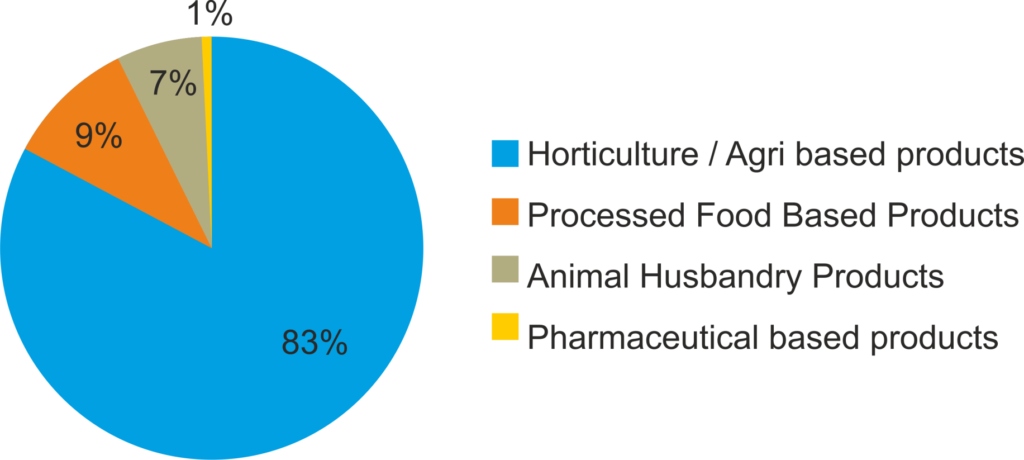
Technology must drive the innovation of efficient Refrigeration systems that are powered reliably by a hybrid of Grid and Renewable Energy, while zero GWP natural refrigerants (Ammonia and Carbon dioxide) must replace those that cause Global Warming.
Transport refrigeration systems must increasingly use zero mechanical energy phase change materials for intermediate and last mile transportation and non-fail cooling systems on board. Mechanical systems can be combined with efficient on-board batteries to power 24 hour refrigeration, EV transport, Scroll Based Refrigeration Systems – are contributing to enhance the reliability and efficiency of the heart of the Cold Chain the Refrigeration System.
Conclusion
The new stock of buildings must follow prescribed and regulatory design strategies, while Decarbonising existing Buildings is a process that must be applied in stages with a planned timetable that includes participation by all stakeholders who must each own their part of the process. Easily applied sensors can monitor and record the improvements and the extent of decarbonisation – in much the same way as we monitor and take care of our own personal health. To reach the committed national goals of decarbonisation, all owners, occupants and operators of buildings must commit to the process. Regulation can expedite the process and make it a part of our lives – the same way we follow rules of road safety or any other regulation that we take for granted.

Vikram Murthy
References
India Cooling Action Plan, ICAP, Mar 2019.
A Comprehensive Review of Thermal Energy Storage; Ioan Sarbu and Calin Sebarachievici
Department of Building Services Engineering, Polytechnic University of Timisoara, Romania, Dec 2017
EASAC – the European Academies’ Science Advisory Council, Policy Report 43, June 2021
ASHRAE HVAC&R Industry News, Dec 23, 2021
ISHRAE COVID – 19 Guidelines
ISHRAE District Energy Systems, Technical Group
